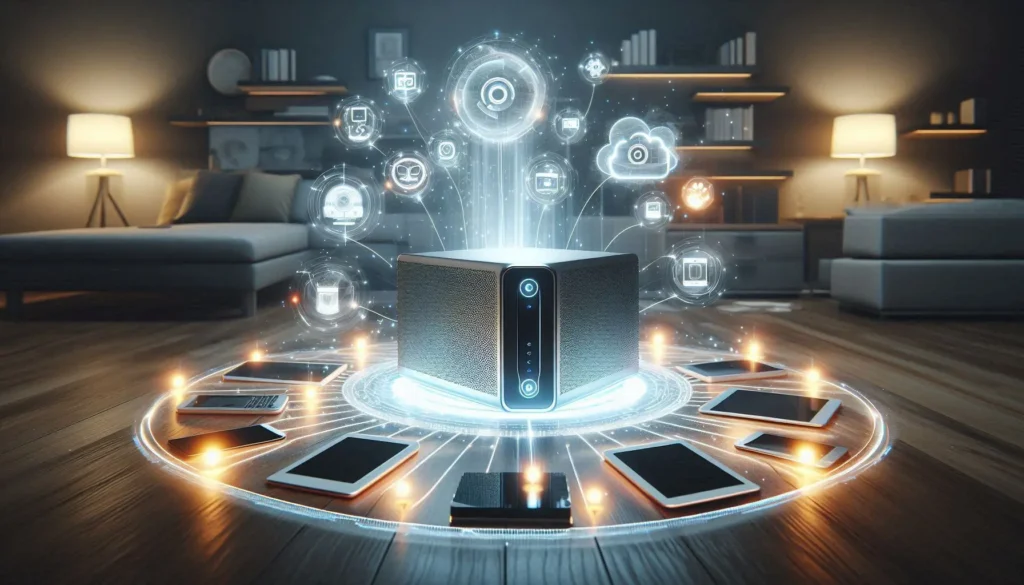
Welcome to the Plex-side: Navigating SmartCast Storms
In the high-flying world of home streaming, a new digital hero emerges—Plex, the multifaceted media server taking center stage. As more households cut the cable chord and brave the world of bespoke viewing, Plex stands as a beacon, or shall we say, a well-engineered arc reactor for your entertainment needs. Amidst this revolution, Vizio SmartCast devices have come to the forefront as favored canvases for presenting your digital masterpiece. Yet, like any great venture, there are hurdles. Lucky for you, you’re in the hands of a visionary equipped to tackle the most pernicious of Plex predicaments. Buckle up as we navigate through the top five conundrums you might face with Plex on your Vizio SmartCast, and offer swift, surgical solutions to keep your experience seamless.
Issue 1: The Phantom Library – Missing or Disappearing Media
Ah, the Phantom Library. It’s the ghost story no one asked for. One moment, your Plex library is a vibrant collage of content, and the next, crickets. It’s not a glitch in the Matrix, but an issue we can liquidate with ease. The phantom library problem often arises from metadata hiccups or discrepancies in file paths.
Resetting and Refreshing Libraries
First, access your Plex Media Server’s settings. Under “Libraries,” locate the media section requiring a little resuscitation. Hit “Refresh All Metadata” and take a coffee break while Plex gets busy updating.
Optimizing Library Settings
For a truly harmonious setup, tailor your library’s preferences. Ensure the “Scan my library automatically” option is enabled and consider scheduling regular updates. Double-check that media folder paths haven’t been altered. Properly named files help Plex’s algorithms work their magic.
Also read:
Issue 2: The Buffering Banzai – Slow Playback Plummet
Welcome to the rollercoaster of streaming woes—Buffering Banzai. It’s a ride no one wants to be on, but one many find themselves involuntarily strapped into. Here’s how you decode and conquer this mystery.
Root Causes and Network Optimization
Buffering on Vizio devices? Likely, your network might be earning a failing grade. Check your internet speed: anything less than 5 Mbps per stream is asking for trouble. Optimize your environment by placing your router centrally, away from walls and obstructions.
Boosting Playback Performance
Log into your server and navigate to settings. Under “Remote Access,” ensure “Enable Remote Access” is unchecked unless necessary. Reduce your streaming quality settings if your network can’t sustain UHD brilliance. For transcoding, bump up your server’s hardware acceleration—or better yet, whenever possible, use direct play to bypass encoding hassles.
Also read:
Issue 3: The Resolution Roulette – Video Quality Quandaries
If the roulette wheel spins and lands on fuzzy visuals or pixelated chaos, you’ve been dealt the Video Quality Quandary card. Let’s flip it over to a better experience.
Understanding and Adjusting Video Quality
Resolution issues can spring from bandwidth restrictions or incompatible display settings. Always ensure your Plex client app and Vizio firmware are updated to newest iterations.
Fine-Tuning Your SmartCast and Plex Settings
In Plex’s settings, under “Quality,” prioritize “Internet Streaming” and “Local Quality.” Set these to a lower resolution if buffering ensues. On your SmartCast, activate “Full UHD” settings for the richest image, but only if your internet speed can match its appetite; otherwise, stick to “1080p.”
Also read:
Issue 4: Connective Chaos – Network Connection Interruptions
If your Plex streaming gets halted more often than a teen’s 10 PM curfew, Connective Chaos might be the bandit at play. Time to mend that fidelity syndrome.
Identifying Network Weaknesses
Start with a ping test; high latency or packet loss needs addressing. Find interference culprits like microwave ovens or cordless phones and either relocate them or enforce channel isolation.
Boosting Your Network Game
Invest in dual-band routers with QoS features for prioritized streaming traffic. Alternatively, mesh networks excel in large homes. Ensure your Plex Media Server and SmartCast are on the same local network for best results.
Also read:
Issue 5: The Subtitles Saga – Closed Captions Gone Rogue
A tale as old as Plex itself: erratic subtitles playing paramour to our narratives. Subtitles often hold the key to context, so let’s restore order in this Subtitle Saga.
Configuring Subtitle Settings
In your Plex Media Server, navigate to “Settings” > “Agents.” Verify that “OpenSubtitles.org” is checked for TV shows and movies. Under “Languages,” define your default subtitle language to preempt conflicts.
Best Practices and Formats
Opt for “.srt” files for best compatibility and steer clear of special characters in filenames. For multi-lingual households, dual subtitles can be entertained through Plex’s advanced subtitle features, fostering harmony over whose subtitles get the crown.
Also read:
Smooth Sailing from Here On Out
Now that we’ve bulldozed through the common Plex issues gracing your Vizio SmartCast, your streaming waters should be clearer than Elon Musk’s vision for Mars. Keep these guideposts in your bookmarks, check for updates on your devices, and maintain your setup as efficiently as a Jarvis protocol poised to assist. Remember, every glitch you’ve conquered is a celebration, allowing more time for what truly matters: your ultimate streaming nirvana. So go ahead, pour yourself a glass of fine wine, kick back, and let the entertainment unfold—you’ve earned it.

Meet Plex-i Man, your friendly neighborhood Plex enthusiast and tech wizard. With years of experience tinkering with media servers and a passion for simplifying complex tech, Plex-i Man is on a mission to help everyone build their perfect Plex setup. When not writing guides or troubleshooting Plex issues, you’ll find him exploring the latest in home theater tech or binge-watching sci-fi series. Got a Plex problem? Plex-i Man is here to save the day!


